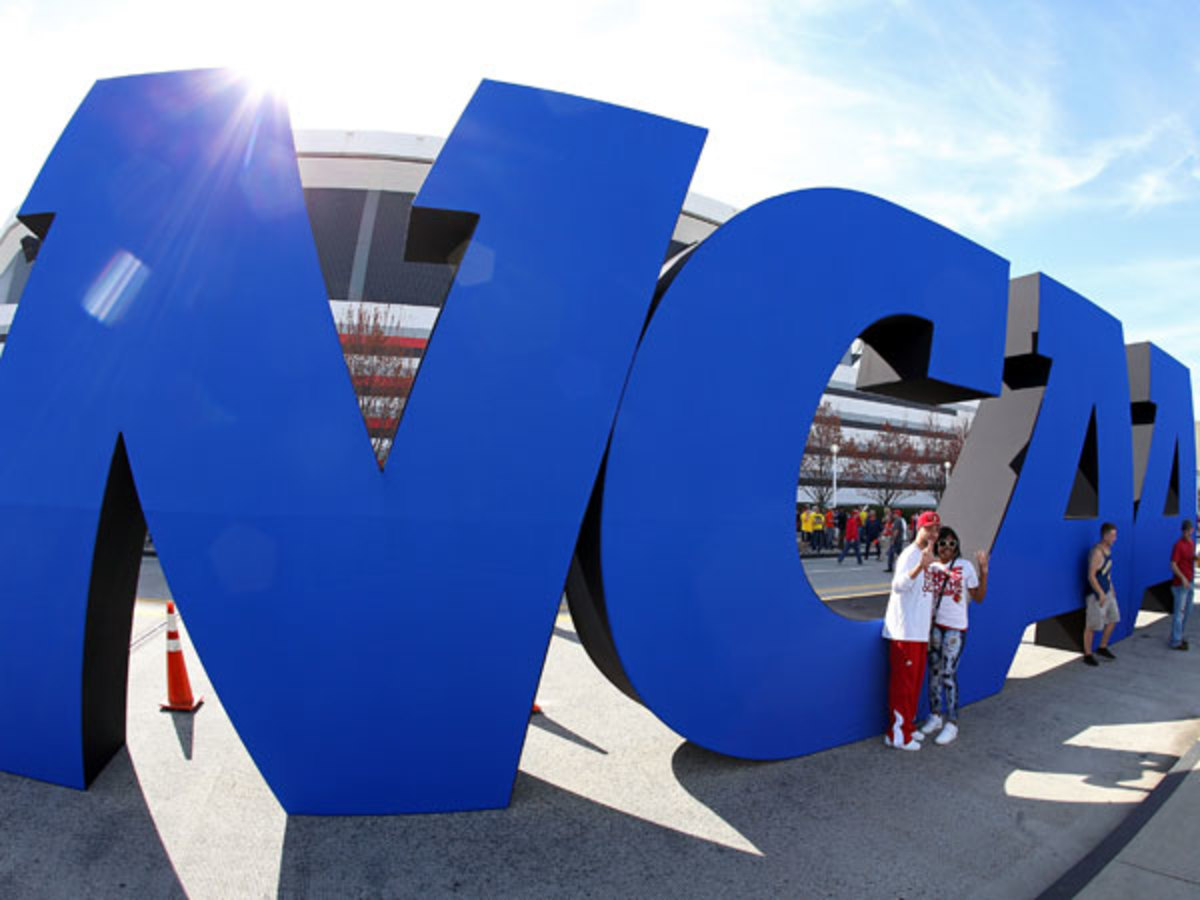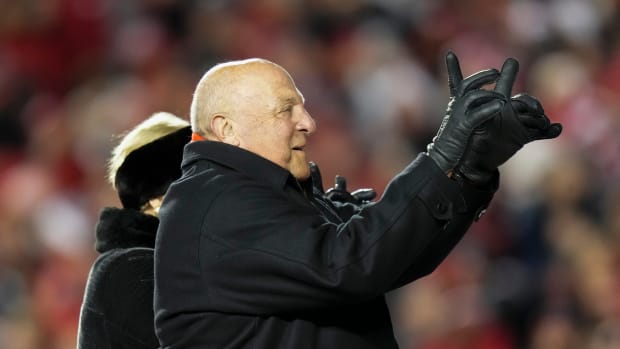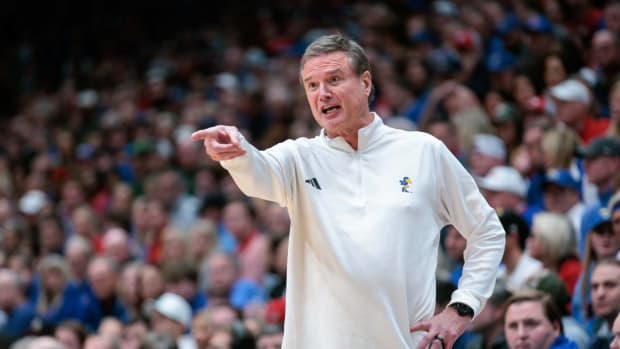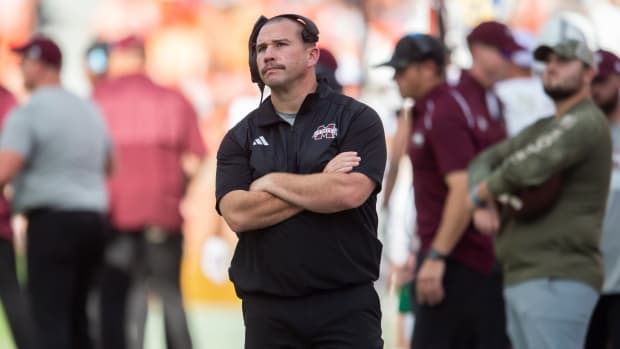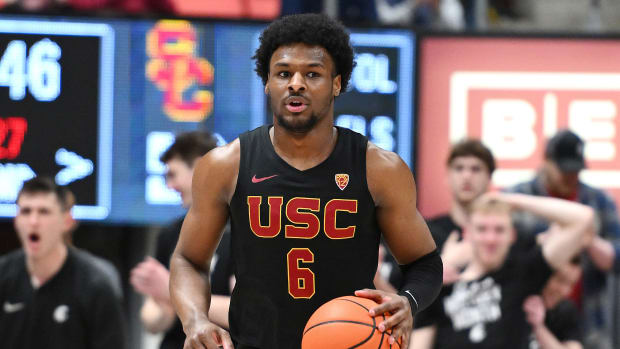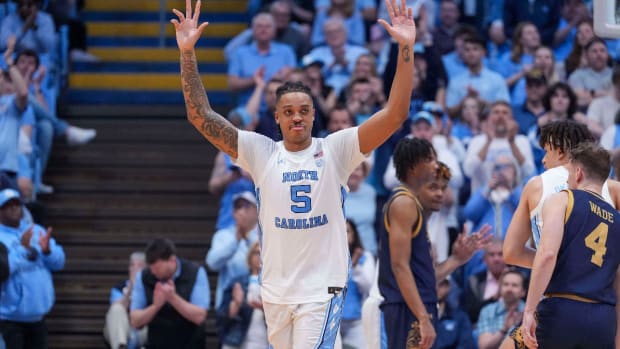O'Bannon v. NCAA, day three: Attorney questions alternative revenue-sharing model
An NCAA attorney questioned an economist's proposed revenue-sharing model. (Streeter Lecka/Getty Images)
OAKLAND, Calif. -- Day three of the O’Bannon v. NCAA trial began on Wednesday with NCAA attorney Rohit Singla continuing his cross-examination of Stanford professor of economics Dr. Roger Noll, who first took the stand on Monday.
Singla questioned Noll’s assertion that the substantial rise in coaches’ salaries and facilities spending over the last 25 years is an example of “inefficient substitution” for revenue that could instead go to student-athletes. In regard to a list Noll provided of various schools’ athletics facilities that cost a combined $5 billion, Singla said: "You did not present any evidence this is too much or too little" relative to the overall rise in revenue. Singla went on to suggest that schools’ construction of academic centers for athletes is an equally valid enticement to prospective recruits as athletic facilities. “[Schools] do not recruit athletes based on academics,” Noll said.
The back-and-forth between the two men was testy at times. “You’re an antitrust expert, correct?” Singla asked. “You know something about markets?” Noll proceeded to call one of Singla’s questions “nonsense.”
The most interesting and possibly promising moment for the NCAA came when Singla questioned Noll’s proposed alternative revenue-sharing model, in which each player on a team would receive equal licensing compensation. Noll contends this model would preserve the common definition of amateurism because “everyone on a team can get paid as long it’s not based on performance.” In an interesting response to a question, Noll said that if the San Francisco 49ers paid every player on their roster the same amount (even $1 million), they would fit the definition of amateurs.
Singla made the case that Noll’s equal-pay model might not be realistic. If it were allowed, Singla said, some schools could opt to increase the value of players’ financial aid, while others might not, so pay would not be equal across the NCAA. Noll agreed, but countered that under his model individual conferences like the Pac-12 could set their own caps, preventing, for example, Stanford and Cal from engaging in a bidding war for an athlete. His conference-cap concept seemed to take the NCAA side by surprise. It would seemingly shift any antitrust burden down a rung.
Singla then questioned Noll’s analysis of the NCAA’s lack of competitive balance, first introduced in a series of charts on Tuesday. “Nobody has said that the competitive balance in the NCAA today is so lopsided that it’s not fun to watch, correct?” Singla asked. He also questioned whether Noll has analyzed how paying college athletes “$150,000 [or] $200,000 a year would affect competitive balance.” Noll said that he hasn’t conducted an analysis because “it wouldn’t make any sense.”
As Noll’s testimony crossed the 10-hour mark, Judge Claudia Wilken tried to speed things along. Much of Singla’s questioning was an attempt to get Noll to quantify the importance of amateurism. When Singla finally stood down, Wilken had questions of her own. She sought Noll’s opinions about the NCAA’s contention that preserving the integration of academics and athletics is a pre-competitive justification for its present model. “If a football player can hang out with a theater major, is that a pre-competitive justification?” she asked.
Noll said no, the restrictions placed on athletes prevent them from fully integrating with regular students. And while the NCAA’s academic rules are “not anti-competitive,” the influence of television -- such as moving a large number of football games to weeknights -- limits integration.
On redirect of Noll, Michael Hausfeld, the lead attorney for the plaintiffs, attempted to enter as evidence several old statements by NCAA officials questioning amateurism. Wilken did not allow it. After nearly 11 hours of testimony spanning three days, Noll was finally dismissed.
For more analysis of O’Bannon v. NCAA, check out SI.com’s complete coverage hub.
